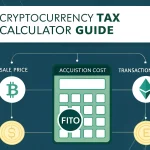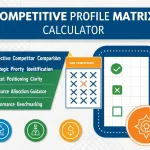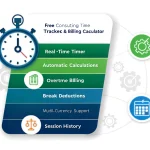Future Value Calculator
Is this tool helpful?
How to use the tool
- Initial Cash Flow: enter your starting sum, e.g., $5,250 or $18,400.
- Rate of Return (%) : type the expected annual rate such as 7 % or 9.5 %. Use a minus sign for losses.
- Number of Periods: set the investment length, for example 15 or 25 years.
- Calculate: press the button to display the projected future value.
- Refine: adjust any field to compare scenarios until the result matches your goal.
The calculator applies the compound-interest formula:
$$ FV = P\,(1+r)^{n} $$
- P – principal (initial cash flow)
- r – annual rate as a decimal
- n – number of periods
Example calculation A
P = $10,000, r = 0.07, n = 15.
$$ FV = 10{,}000\,(1+0.07)^{15} = 10{,}000 \times 2.7589 = \$27{,}589.23 $$
Example calculation B
P = $20,000, r = 0.095, n = 25.
$$ FV = 20{,}000\,(1+0.095)^{25} \approx 20{,}000 \times 9.56 = \$191{,}200.00 $$
Quick-Facts
- U.S. stocks returned ≈ 10 % annually from 1926-2022 (Damodaran, 2023).
- Rule of 72: 72 ÷ rate ≈ years to double (SEC, 2022).
- Average U.S. inflation 1993-2022 was 2.4 % (BLS CPI, 2023).
- Jacob Bernoulli described continuous compounding in 1683 (Bernoulli, Ars Conjectandi).
FAQ
What is future value?
Future value is the amount your single investment becomes after compounding interest over a set period (Investopedia, 2023).
How does compound interest work here?
The tool multiplies your principal by (1 + r) for every period, so growth accelerates because interest earns interest each cycle (Federal Reserve, 2020).
Can I model negative returns?
Yes. Enter a negative rate (e.g., -3 %) to see how losses shrink your capital; the formula handles the sign automatically (SEC, 2023).
Which compounding frequency does the calculator assume?
It assumes annual compounding. To mimic monthly compounding, divide your yearly rate by 12 and multiply periods by 12 (CFA Institute, 2021).
How do I pick a realistic rate?
Use long-term averages for your asset class—10 % for U.S. equities, 5 % for investment-grade bonds (Morningstar, 2023).
Does the tool adjust for inflation?
No. Subtract expected inflation (≈ 2.4 %) from your nominal rate to estimate “real” growth (BLS CPI, 2023).
Why does period length matter so much?
Because compounding is exponential, doubling the time can more than double the result. “Time is the most powerful force in investing” (SEC, 2022).
Is the calculation exact?
Within the limits of floating-point rounding, it matches the mathematical formula; market volatility and taxes still affect real-world outcomes (IRS, 2022).
Important Disclaimer
The calculations, results, and content provided by our tools are not guaranteed to be accurate, complete, or reliable. Users are responsible for verifying and interpreting the results. Our content and tools may contain errors, biases, or inconsistencies. Do not enter personal data, sensitive information, or personally identifiable information in our web forms or tools. Such data entry violates our terms of service and may result in unauthorized disclosure to third parties. We reserve the right to save inputs and outputs from our tools for the purposes of error debugging, bias identification, and performance improvement. External companies providing AI models used in our tools may also save and process data in accordance with their own policies. By using our tools, you consent to this data collection and processing. We reserve the right to limit the usage of our tools based on current usability factors.







